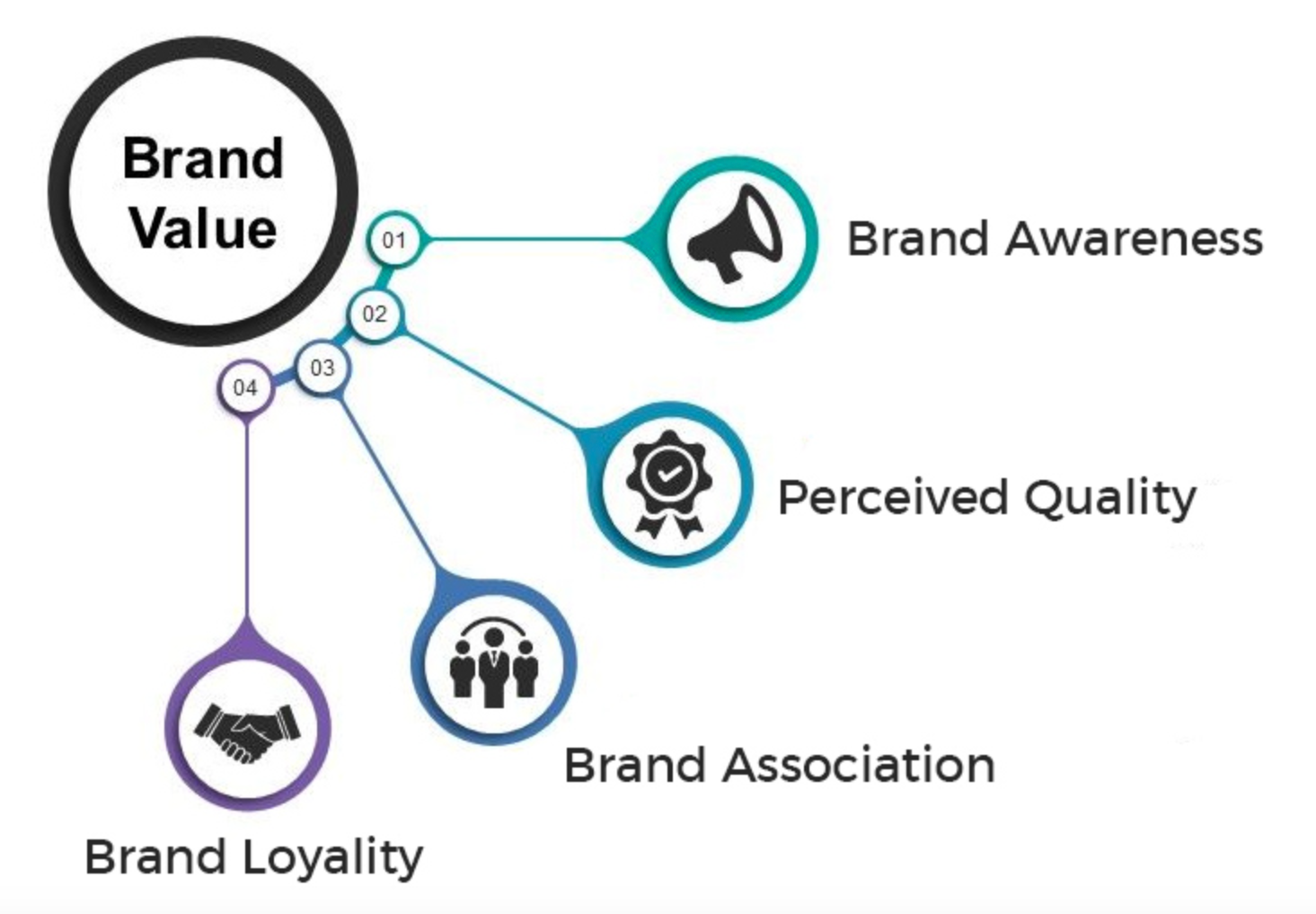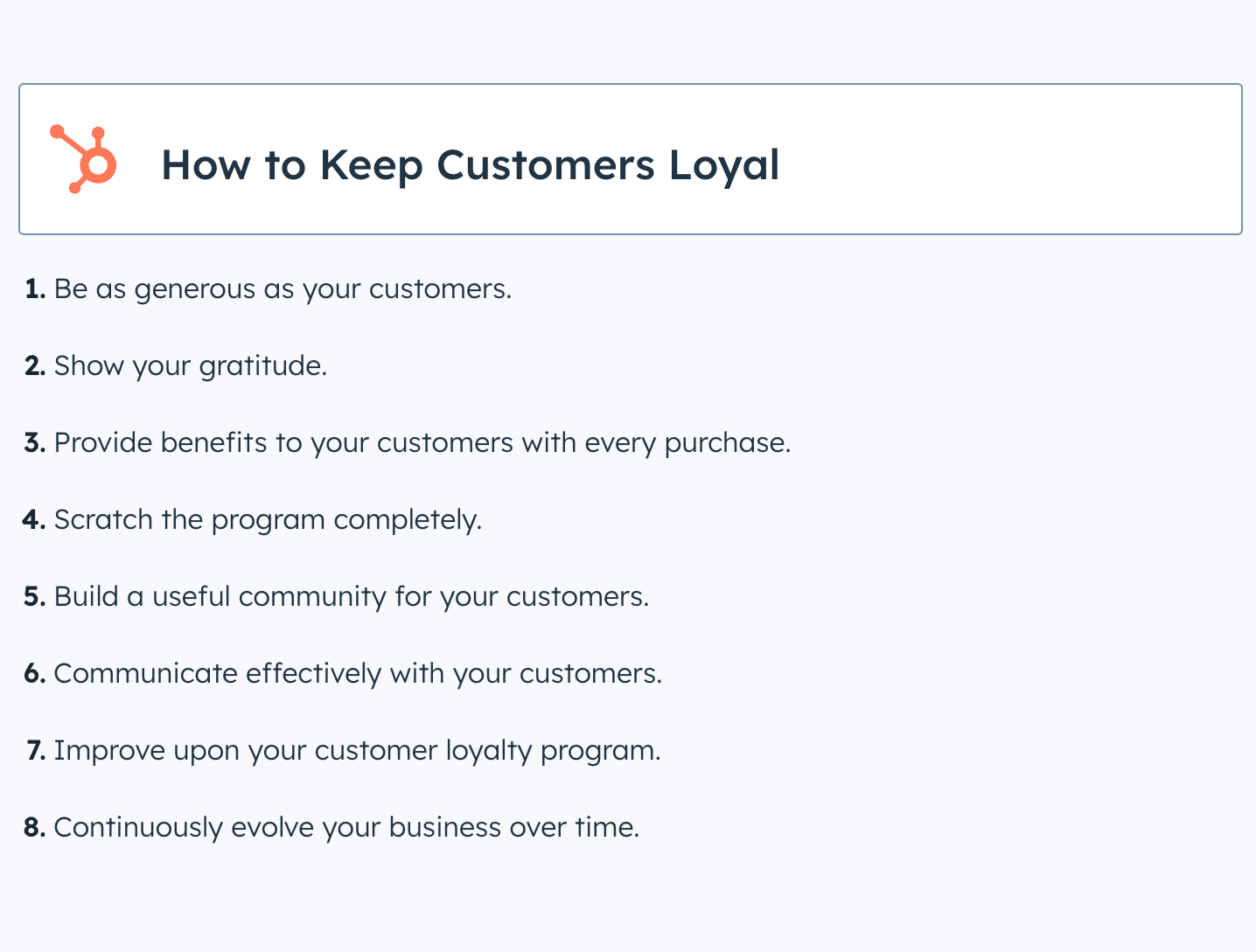Building brand equity might seem like alchemy. Take Starbucks and a local coffee shop – they both sell essentially the same product, but one has a brand value reportedly exceeding $45 billion, equivalent to the GDP of Latvia! That’s the enigmatic power of brand equity. Over the next decade, unleashing this power will separate the leaders from the laggards.
Drawing upon my decade-long experience at the forefront of brand equities, I will let you in on a wealth of battle-tested strategies. Along this journey, you will uncover secrets that transform brands from anonymous names to powerful juggernauts, resonating worldwide.
Buckle up for an insider’s look, as we explore the mechanics of brand equity and how your brand can triumph in this high-stakes real-life game. Building brand equity is no magic; it’s a craft. And like any craft, it can be honed, perfected and made a potent weapon in your arsenal. Let’s get crafting.
Unveiling the Secret to Building Brand Equity
- Understand your brand’s current position
- Define your unique value proposition
- Maintain consistent brand messaging
Step 1: Understand Your Brand’s Current Position
Video recording software isn’t an option. It’s a necessity for conducting brand audits. It provides a holistic view of where your brand stands in the market.
Brand audits offer invaluable insights into:
- How your brand is perceived
- Its strengths
- Its weaknesses
- Opportunities for growth
It shines a light on potential areas that require attention or adjustment. A periodic brand examination can, therefore, act as your brand health check.
Capturing all this data requires a myriad of modern tools and techniques. Comprehensive brand tools, like Brandwatch, SEMRush, or Spyfu, offer analytical insights on your online presence. These indicators help discern brand positioning, online visibility, and audience sentiment.
Step 2: Define Your Brand’s Unique Value Proposition
Clarity on your brand’s unique selling points is core to creating an effective value proposition. It’s about more than just what you sell; it’s about how you solve your customers’ problems better than anybody else. This distinctive quality separates your brand from the competition and makes you a preferred choice among customers.
Value propositions play a pivotal role in building brand equity. An explicit, compelling value proposition makes your brand memorable and encourages customer loyalty and advocacy.
Think hard about the distinctive benefits your product or service offers and how it’s different or better than the alternatives available.

Step 3: Consistent Brand Messaging
Consistency is key in how you communicate your brand to the world. Consistent brand messaging reinforces your brand personality, strengthens your position in the marketplace, and aids in the creation of a familiar and trusted presence.
This consistency should be apparent across all platforms – be it your website, social media channels, or any other customer touchpoint. A set of brand guidelines helps in maintaining this uniformity.
Some quick tips to ensure this are:
- Maintain a consistent tone and style in your content
- Use the same set of colours and fonts that resonate with your brand
- Ensure your logo appears the same on all platforms
Having solidified these initial steps, you are now equipped to navigate the intense yet rewarding seas of advanced brand equity management.
Mastering Brand Equity Management: A Game Changer
- Synergy between brand management and brand equity
- Impact of brand differentiation and its influence on brand equity
- Exploration of successful cases and practical strategies
We must regard mastering brand equity management not as a bonus, but as a necessity. It is the game changer for your business’s (successful/unsuccessful) trajectory.
The Role of Brand Management in Enhancing Brand Equity
Brand management is like a master puppeteer – unobserved, yet choreographing every motion with precision. Effective brand management enriches brand equity in ways you might not have thought of. But how?
Brand management, when executed successfully, breathes life into your business’s identity. The result? A brand that resonates with your target audience. Managing your brand well streamlines how your customers perceive you – consequently enhancing overall brand equity.
Next, we are going to examine real-life examples of triumphant brand management strategies. This will imply understanding how big players have managed their brands to build significant equity.

Case Studies of Successful Brand Management Strategies
Whispers of the most successful brands reverberate in every corner of the market, and their brand management strategies are definitely part of the conversation.
Brands like Apple, Google, and McDonald’s have harnessed the power of effective brand management to unprecedented heights, thereby nurturing substantial brand equity. Tune in to their symphony and compose your masterpiece!
Let’s look at Red Bull as an impressive example. Their brand is associated with the extremes. Be it boundary-pushing athletes, F1 drivers, or people jumping from space. This consistent placement of their brand leads to strong brand equity, and therefore strong brand loyalty. They know their target market and have tapped into their dare-devil personality traits well.

The Power of Brand Differentiation
Ever wondered how stalwart brands leave a unique imprint on our minds despite the market being oversaturated with similar products or services? The secret lies in brand differentiation.
In a market filled to the brim, standing out sometimes seems impossible. How do you attract attention when others are doing the same dance? The answer is brand differentiation. This means positioning your brand uniquely in your customer’s mind, creating an unmistakable identity. This distinctive identity can make a difference in a congested market.
The Impact of Brand Differentiation on Brand Equity
Brands that tread the unique path and differentiate themselves are often the ones that strike gold in terms of brand equity. Why? Simply because there is a direct correlation between uniqueness and value.
Creating differentiation amplifies the perceived value of your brand, thereby favorably influencing brand equity. It’s almost like two ends of a seesaw: as brand differentiation goes up, so does brand equity.

Measuring Brand Equity: The Key to Continuous Improvement
- Regular brand equity assessments vitalize the strategic approach
- Essential understanding of brand equity metrics ensures improved use of data
- Brand equity tools and methodologies: the hidden secret to smart entrepreneurship.
The Importance of Regular Brand Equity Measurement
As in sport so in brand equity, continuity in measurement remains the hallmark of champions. Frequent assessment of brand equity positions your brand favorably in a dynamic market where trends fluctuate.
Transforming your branded business into a household name doesn’t occur by chance or overnight. It’s the diligent result of continuous tweaks that resonate with your target audience. Regularly measuring brand equity enables you to:
- Monitor the response to your marketing efforts
- Spot opportunities for growth
- Nip potential problems in the bud
Moreover, this vigilance provides invaluable insights into how your audience perceives your brand compared to competitors. By doing so, you can navigate consumer bias in your favor and achieve real differentiation.

Tools and Techniques for Measuring Brand Equity
Today’s corporate battlefield thrives on empirical warfare; your armor in this fight is found in an arsenal of psychological, financial, and preference tools.
Brand evaluation metrics range from net promoter scores to brand recognition and recall surveys, and from brand resonance estimators to social media analytics. To enrich your understanding of your brand’s market standing, couple tools that measure brand equity with techniques such as:
- Multi-dimensional scaling: This is a way to visualize individual cases and their connection within larger datasets.
- Conjoint analysis: This asks your customers how they value different aspects of your product or service.
- Correspondence analysis: This insight is useful for comparing the strength of brands and their attributes to gain a deeper understanding of consumer perception.
Interpreting Brand Equity Metrics
Moving beyond quantity to quality, the insightful interpretation of brand equity metrics breathes life into numbers. Comprehending this data doesn’t merely involve knowing what individual numbers mean. It’s an art that involves:
- Recognising patterns
- Benchmarking against industry norms
- Making considered projections about the future
The metrics reflecting customer perception, customer preference, and financial performance reflect your brand’s heartbeat in an intensely competitive market.

How to Use These Metrics to Improve Your Brand Equity Strategies
Performance metrics are signposts on your journey to high brand equity. Understanding these metrics allows us to chart a reliable roadmap to better brand equity strategies and increase positive brand associations.
Taking the cues from these metrics, you’re better poised to refine marketing strategies to create a brand identity that drives positive customer sentiment and foster loyalty.
It advances customer-centric strategies by helping understand what features, messages, and experiences resonate with the audience. Moreover, brands can drive return on investment by aligning their spending on strategies that the metrics show are likely to boost their brand equity.
Unlocking Brand Equity Value: The Ultimate Goal
- Learn to connect the dots between brand equity and brand value
- Get insights on using brand equity to drive business growth
- Comprehend with real-life examples of successful leverage of brand equity
The Relationship Between Brand Equity and Brand Value
Brand equity has a significant influence on brand value. The relationship is subtle yet powerful. To clarify, think of brand equity as the oven, and brand value as the baked cake. Brand equity lays the foundation, and when nurtured appropriately, it enhances the overall brand value.
How Brand Equity Contributes to Brand Value
Brand equity is often regarded as the fuel that propels a brand’s value. It is the collection of beliefs, recognitions, and experiences a customer has about your brand. When it’s positive, it acts as a magnet that:
- Attracts more consumers
- Fosters loyalty
- Enables you to command a premium price
Consequently, when you build brand equity, you enhance the brand’s overall financial value.
Increasing brand value through brand equity strategies is achievable with a methodical approach. One that involves:
- Understanding your customers
- Differentiating your brand
- Delivering consistent experiences
- Fostering emotional connections

Leveraging Brand Equity for Business Growth
Brand equity truly shines when harnessed to propel business growth. It offers an opportunity for businesses to scale and consolidate their market position. Let’s take a closer look at how.
How to Use Brand Equity to Drive Business Growth
Use your brand equity as a leverage to carry your business forward. Harnessing your strong, positive brand image makes your marketing efforts more effective, increasing your market share and creating a positive spiral of growth.
Finally, we move from theory to practice. There are numerous real-world examples of businesses leveraging their brand equity to achieve massive growth. Amazon, for instance, has brilliantly leveraged its brand equity. Not just for sales, but for a myriad of other ventures like movie production, logistics, and cloud computing. Its uncompromising focus on customer experience has translated into enormous brand equity, allowing it to expand and prosper.
Thus, brand equity serves not just as a critical metric that mirrors the current customer perception of your brand, but also as a powerful tool for growth and value creation. Understanding and leveraging it can be a game-changer for any business.
Your brand equity is not just a reflection of your past marketing efforts but also a key lever influencing your future growth and success. Harness it effectively, and you unlock the ultimate goal – a valuable brand.
Brand Equity and Customer Loyalty: A Winning Combination
- Exploring the symbiotic relationship between brand equity and customer loyalty
- Strategies to enhance customer loyalty via brand equity optimization
- The underlying significance of a loyal consumer base in relation to brand equity
The Impact of Brand Equity on Customer Loyalty
Brand equity and customer loyalty often exist in a virtuous circle, each feeding into and enhancing the other. The strength of a company’s brand equity can significantly influence customer loyalty, shaping how consumers perceive the brand and driving their decision to continue purchasing and advocating for its products or services.
Developed under the tenets of trust, quality, and legitimacy, brand equity forms a sort of consumer magnetism. Once this is achieved, it becomes easier to bolster customer loyalty because the perception of product superiority is already there. This forms a competitive advantage that can keep consumers hooked and potentially immune to competitive market pricing.

How brand equity influences customer loyalty
Understanding how brand equity influences customer loyalty is integral for shaping effective marketing strategies. A tangible example is Apple; their brand equity has translated into a fiercely loyal customer base.
This level of loyalty often leads to repeat sales and even consumers converting into brand ambassadors, singing praises and willingly promoting the brand within their circles. Think about the Android vs Apple argument and how passionate each side gets. Now, this is brand equity in action!
Tips for building a loyal customer base
A loyal customer base signals to potential customers that the brand is trustworthy and dependable. This perception helps ramp up the brand’s equity, fostering an image of a credible and stable brand in the market.
Building a loyal customer base requires both strategic maneuvers and an inherent understanding of your target audience. Use the following steps:
- Create compelling, differentiated products or services and ensure consistent delivery
- Reward customer loyalty with exclusive offers
- Provide superior customer service
- Actively foster community through effective communication channels
Through these efforts, one can seed and nurture a loyal customer base, feeding back to enhance brand equity.
With a clear understanding of this marriage between brand equity and customer loyalty, businesses can unlock new avenues for growth and sustainability. However, the journey doesn’t stop here; creating successful brand equity strategies requires continuous assessment and evolution.
Wrapping Up a Decade of Brand Equity Trials, Triumphs, and Transformations
10 years of experience in the ever-dynamic world of brand trust has highlighted the significance of value proposition, market understanding, consistency in communication, and evolution with times.
Each of those hard-earned lessons presents an invaluable guidebook to all seeking to carve a unique space in their respective markets. Ignoring any could be setting oneself up for suboptimal customer value perception.
Your first point of action? Revisit your value proposition. Does it meet the needs and preferences of your customer base? If not, refresh and align it for your targeted audience.
Next, take a deep dive into your current communication strategy. Is it consistent and reflective of your brand personality? Improvise and align if required.
Last, but not the least, don’t forget to evolve and adapt to changing market trends and customer preferences. A stagnant brand will lose its relevance sooner or later.
As you apply these insights, how will you ensure your brand keeps evolving without losing its core essence?
Move forward with brand building but remember, swift and responsive evolution is the key to long-lasting brand equity. This decade-long journey has shown us nothing but that. Now, it’s your turn to make your mark.

